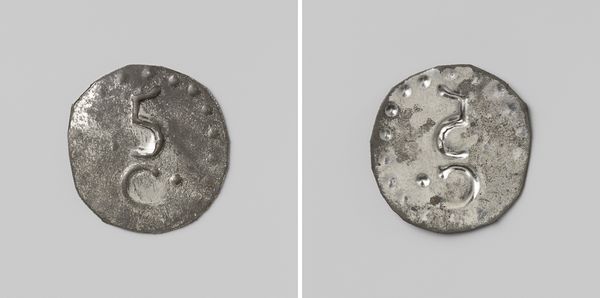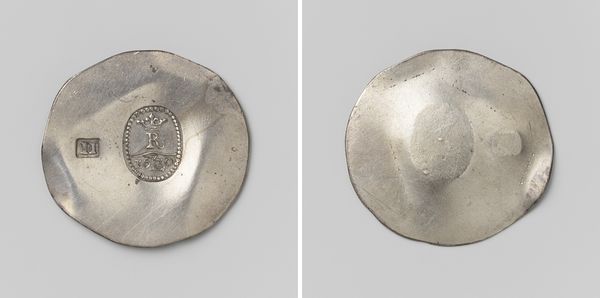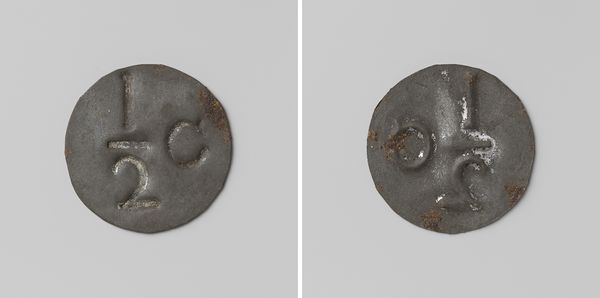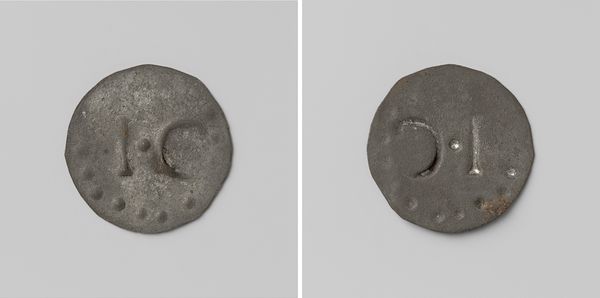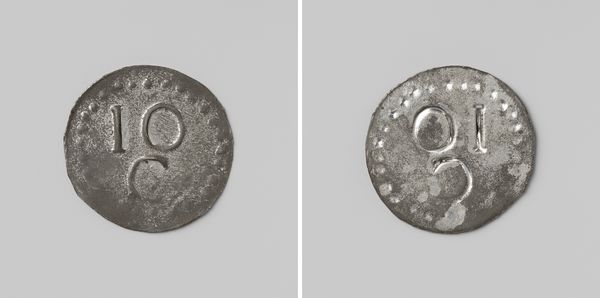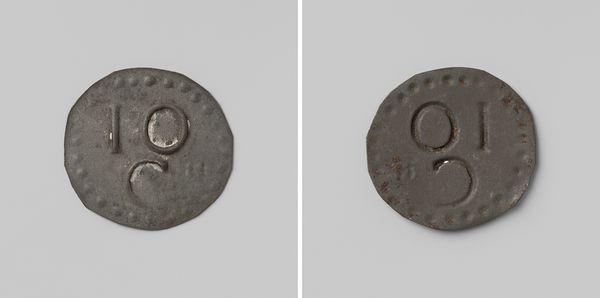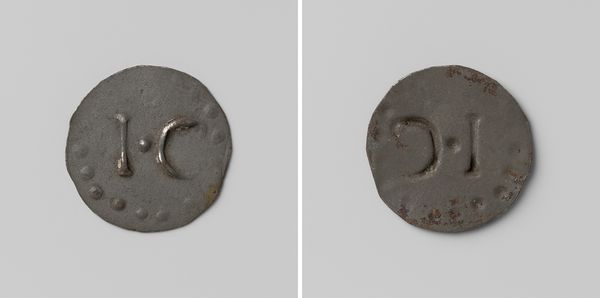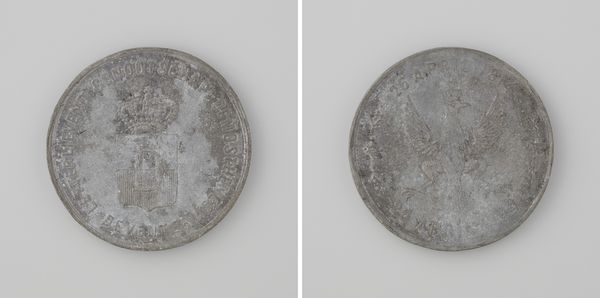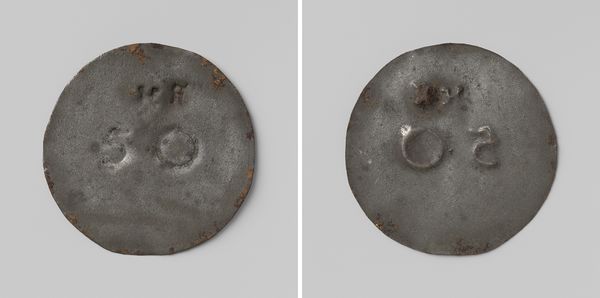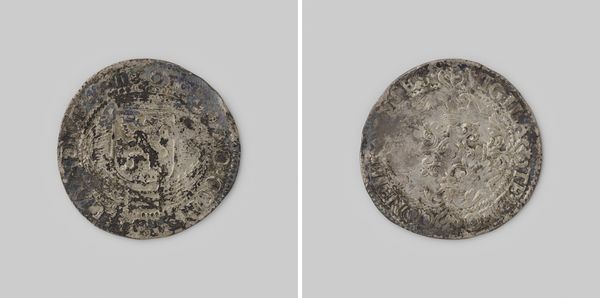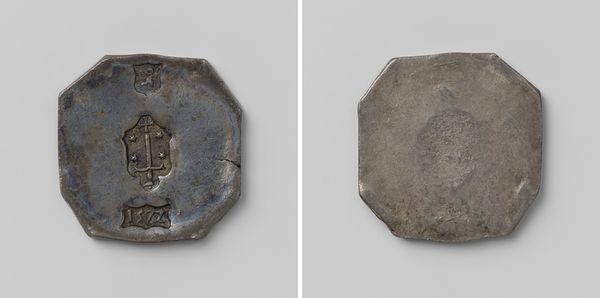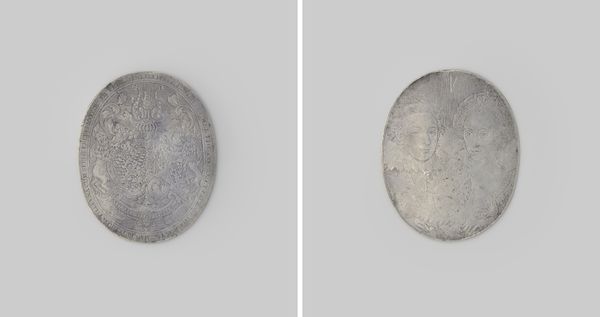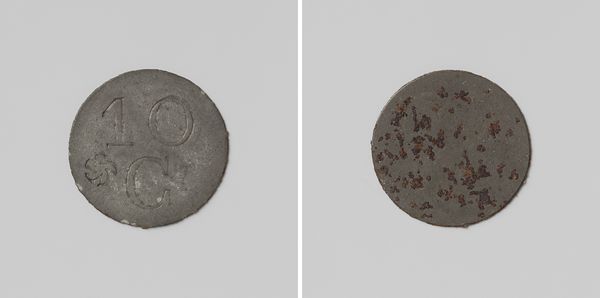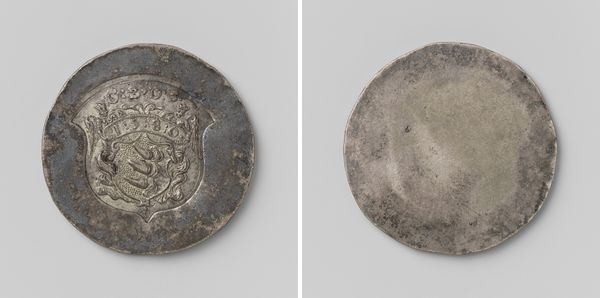
Strafgevangenis Ommerschans, huismunt geslagen op last van de Maatschappij van Weldadigheid ter waarde van tien cent before 1830
0:00
0:00
print, metal, sculpture
# print
#
metal
#
sculpture
#
sculpture
#
ceramic
Dimensions: diameter 3.6 cm, weight 2.45 gr
Copyright: Rijks Museum: Open Domain
Curator: Before you, we have a fascinating object from the Rijksmuseum collection: a house coin from the Ommerschans penal colony, dating to before 1830. The full title is “Strafgevangenis Ommerschans, huismunt geslagen op last van de Maatschappij van Weldadigheid ter waarde van tien cent.” It’s believed to be metal, though that is unconfirmed. Editor: My first impression? Bleakness. This small, tarnished metal disc feels weighted with hardship. Even the placement in this photograph gives it a lifeless gray backdrop, emphasizing the rough texture and crudeness of the stamping. Curator: It’s true, its materiality speaks volumes. This was not meant for display, nor intended for aesthetic pleasure. The Maatschappij van Weldadigheid, or Society of Benevolence, used places like Ommerschans to, supposedly, reform beggars and vagrants through labor and discipline. These house coins served as a controlled form of currency within the prison walls. Editor: Controlled is definitely the word that comes to mind. What’s really striking is how it strips away individual agency, transforming the human element to a transaction. It has these divots lining its outer edge, suggesting a rudimentary or primitive ritual of creation— or the idea that this item was circulated by desperate hands. Curator: Precisely. Consider that the coin depicts its value of "10 cents" but also signifies social control. The Society promoted hard work and thrift, values deeply embedded in the emerging bourgeois ideology of the time. So, this isn't just a means of exchange. Editor: This coin presents an absence of symbols we would associate with trade or wealth: The familiar imagery on formal coinage that suggests prosperity. There is only a stark, numeric value within an even starker circular field. The message here is unambiguous and oppressive. It whispers of bare survival under surveillance. Curator: Its very existence and preservation within museum collections raises important questions. How do we contend with objects connected to human suffering? Does their inclusion serve as a form of witnessing? What responsibility does the institution have when showcasing these histories? Editor: I think it’s a critical function, though deeply troubling. This coin becomes a potent symbol—not just of individual suffering, but also of systemic failures. Its crudeness helps us confront difficult aspects of our social history—a permanent reminder of the ways society has dehumanized vulnerable populations.
Comments
No comments
Be the first to comment and join the conversation on the ultimate creative platform.
